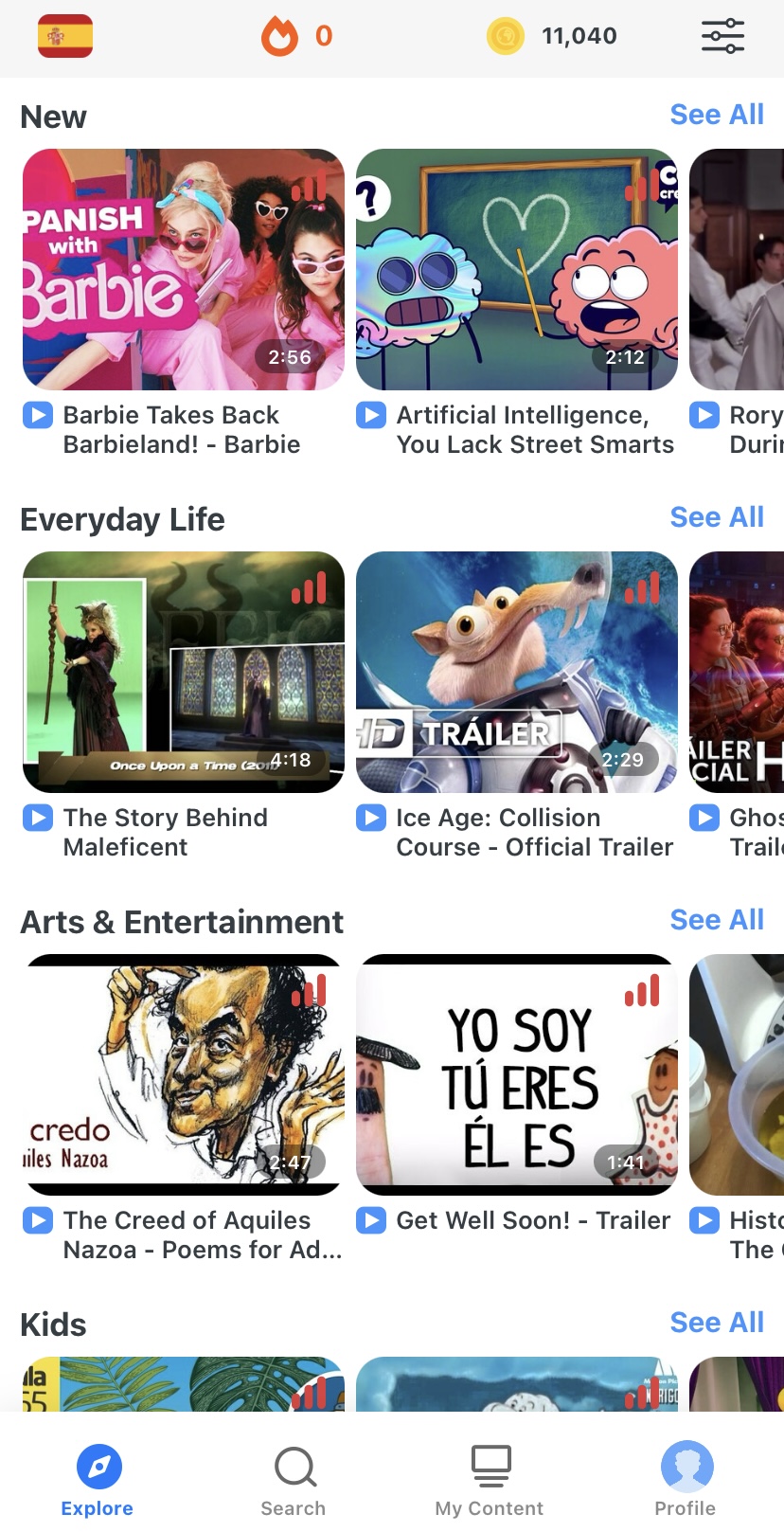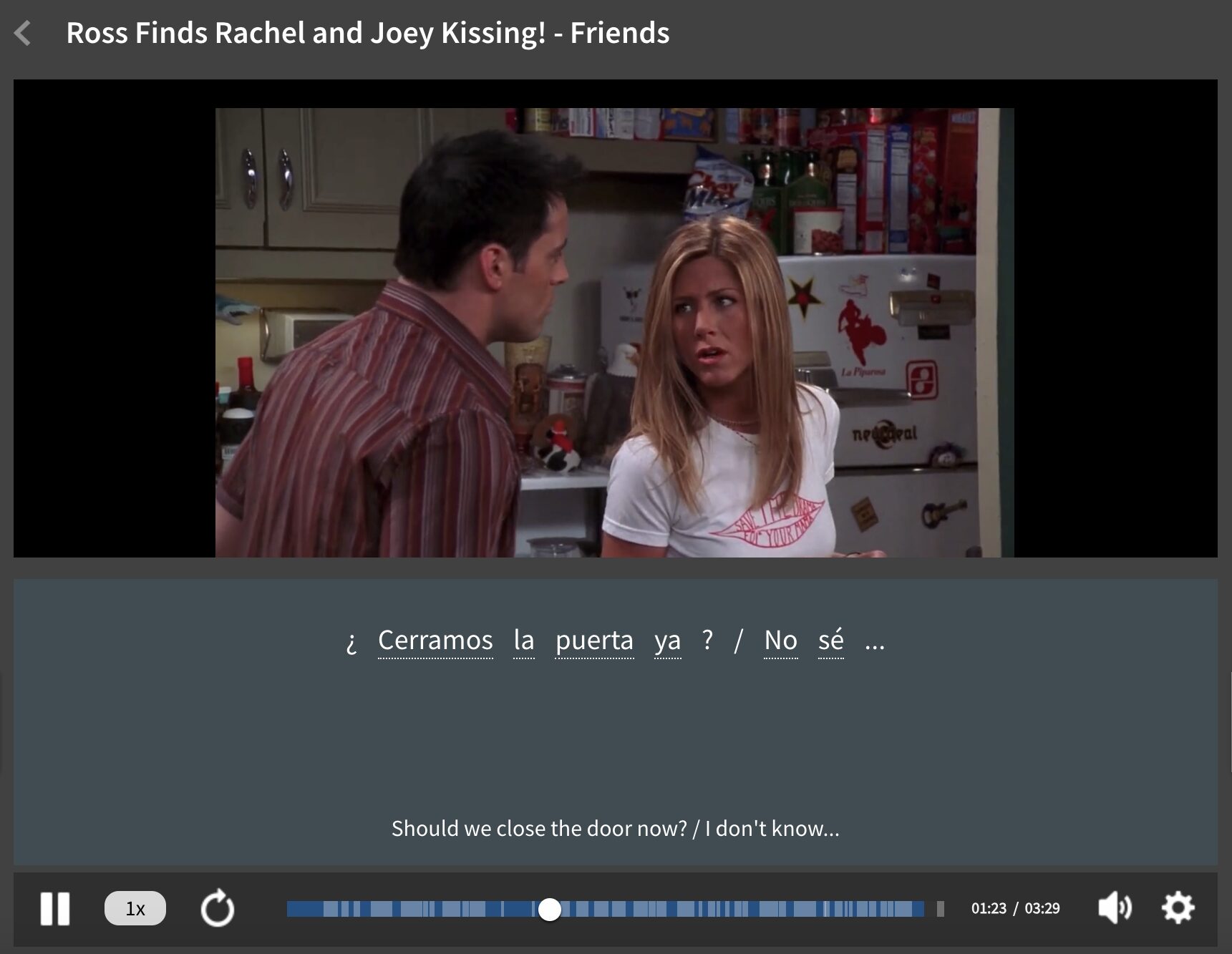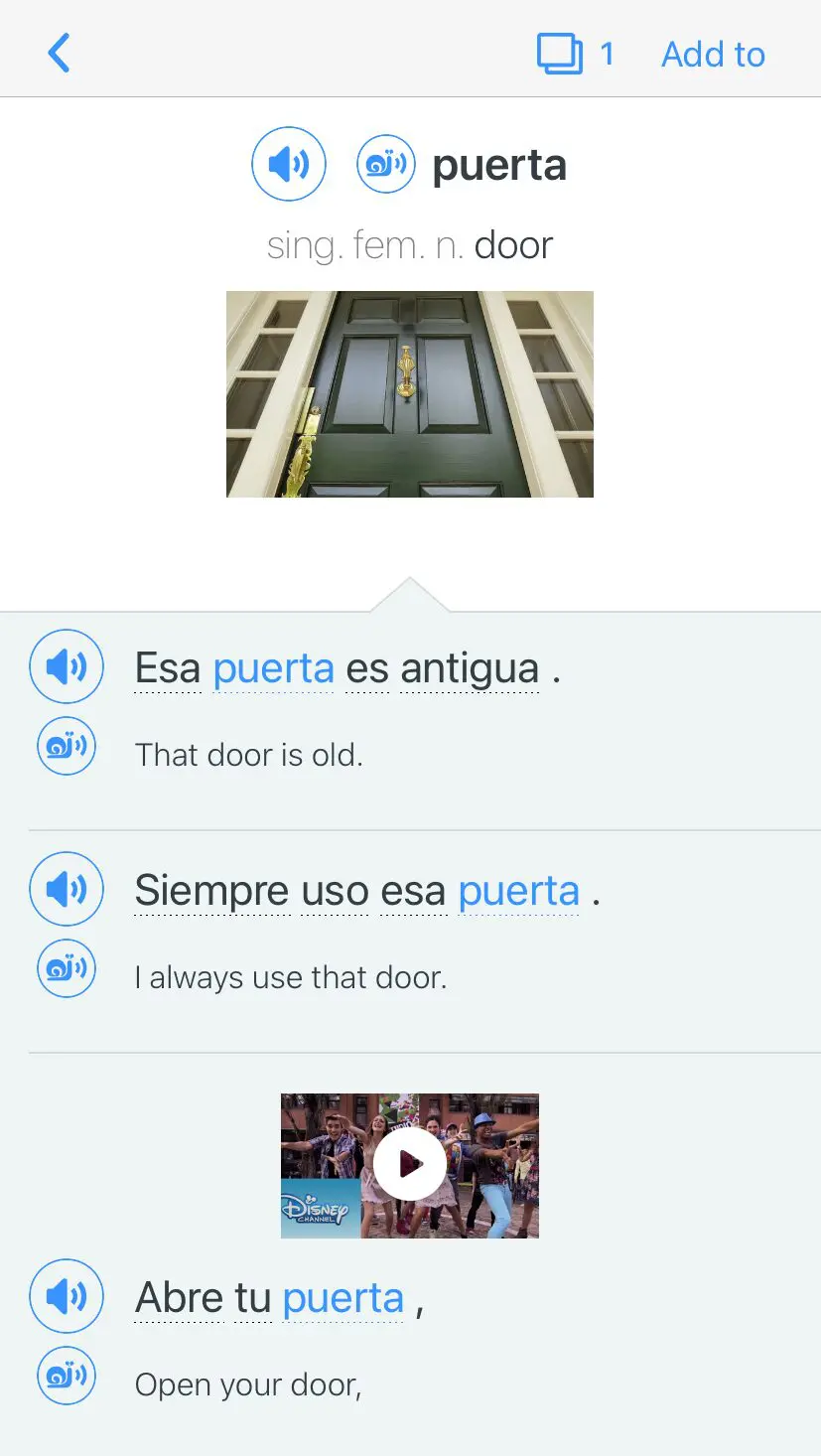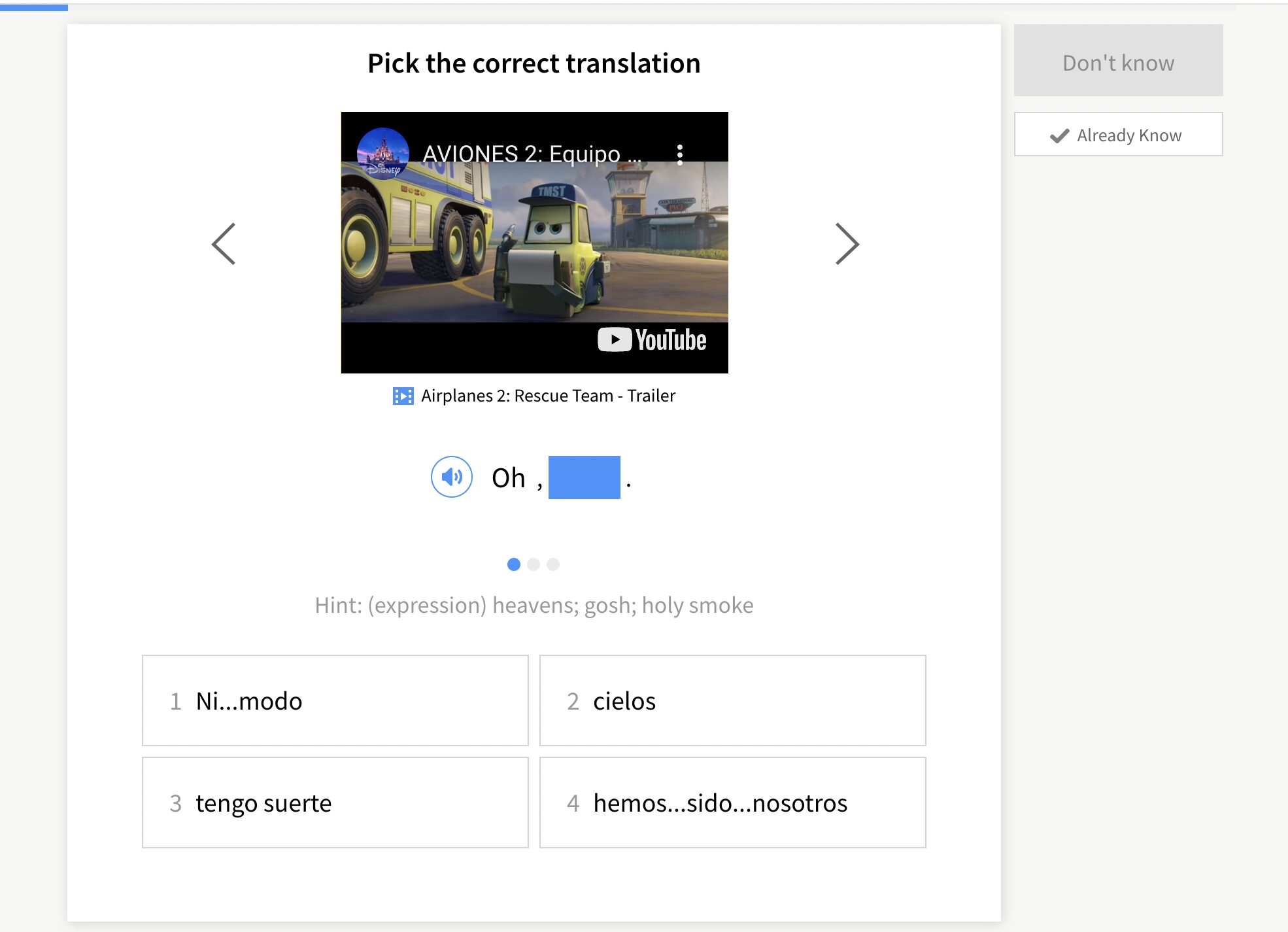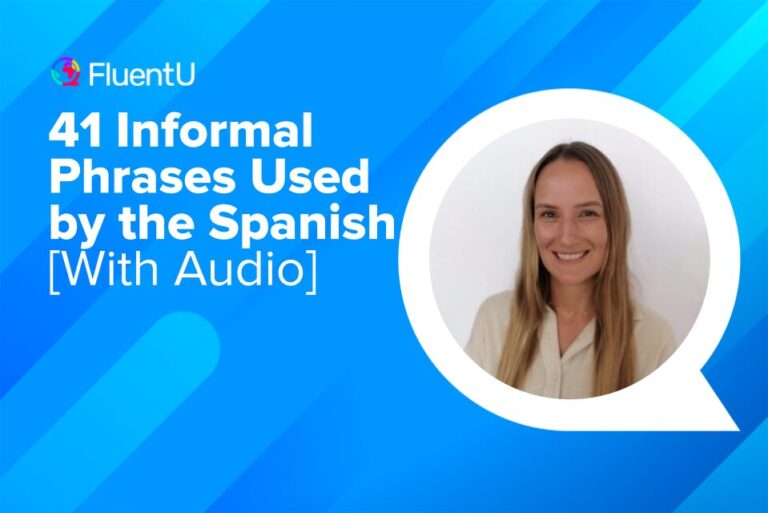Contents
- 1. Craft your (re)learning goals
- 2. Schedule your Spanish studies
- 3. (Re)read Spanish written materials
- 4. Practice writing in Spanish
- 5. Listen to audio content
- 6. Talk to others (and yourself)
- 7. Use flashcard apps
- 8. Take a Spanish course or two
- 9. Play games
- 10. Watch videos
- 11. Immerse yourself in Spanish
- And One More Thing…
Spanish Refresher: 11 Ways to Relearn Spanish
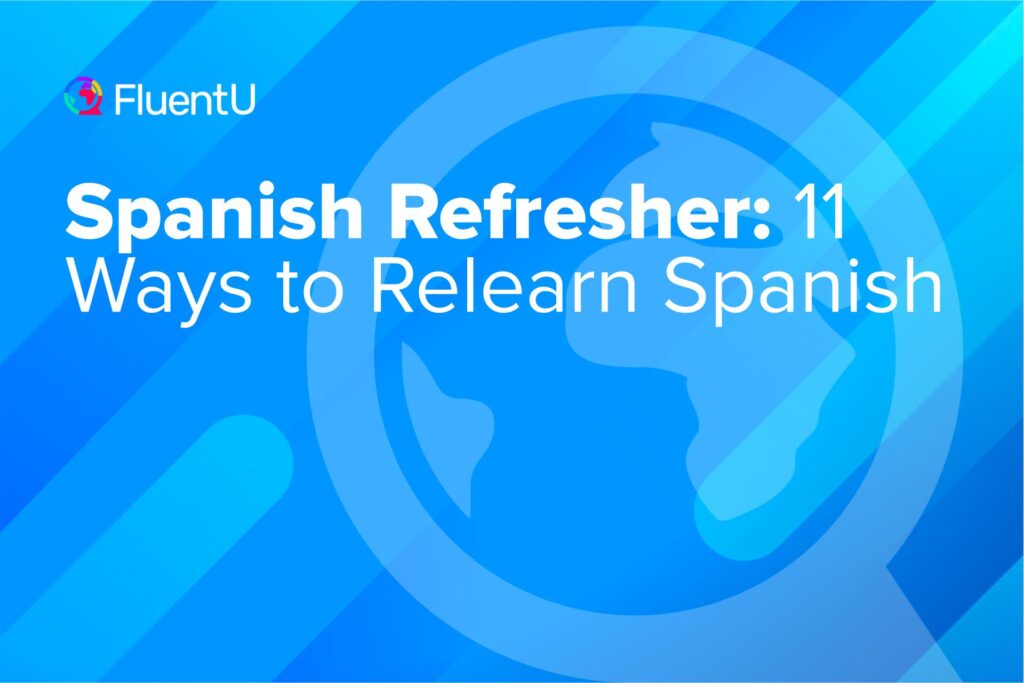
Want to get back into Spanish, but don’t know where to start?
Luckily, you don’t have to start entirely from scratch.
In this post, I’ll cover how to relearn Spanish in 11 actionable steps.
Download: This blog post is available as a convenient and portable PDF that you can take anywhere. Click here to get a copy. (Download)
1. Craft your (re)learning goals
Chances are, your current reasons for relearning Spanish differ from the ones you had when you were starting out. It’s important to establish your “whys” from the outset, so you’ll know where to focus your efforts and maximize the limited time you have. For example, it wouldn’t make sense to concentrate on studying Spanish medical terminology unless you work at a healthcare facility.
If you don’t have a specific “why” for refreshing your Spanish yet, maybe this list of reasons to learn Spanish can help you out.
Once you’ve established your reason(s), you can start setting up SMART relearning goals. This is the part where you outline exactly what you want to achieve by relearning Spanish.
In case you’re not familiar with SMART, the acronym stands for:
- Specific. You could say “I want to learn 10 new words each week” instead of just “I want to learn Spanish.”
- Measurable. Using our previous example, your basis for success is that you’re able to learn at least 10 new words per week. If you can go above that number, that’s awesome. If not, you could always tweak your goal or figure out how you could meet it in the next week.
- Attainable. 10 new words a week is quite attainable, if you ask me. Otherwise, you could always adjust that number upward or downward.
- Relevant. Let’s say you’re relearning Spanish because you plan to visit your in-laws in Mexico soon. In that case, you can tweak your goal further and say something like “I want to learn 10 new family-related words each week.”
- Timely. Let’s say you’re visiting your in-laws in three months (12 weeks). Assuming that you study every week without fail, do you think you could communicate with your in-laws with just 120 family words? Again, depending on your situation, you may want to readjust your goal—whether it’s the number of words or the amount of time needed to learn them.
2. Schedule your Spanish studies
I know it can be hard to squeeze in Spanish study time when you have a hectic schedule, but it is doable with these tips:
- Create a checklist of your Spanish learning to-dos. List down the specific things you can do to get closer to your Spanish fluency goal. For example, you could run through flashcards one day and drill verb conjugations the next. If you’re going to regularly refer to your checklist, make sure it’s in a place that’s immediately visible to you (e.g., the outside of your fridge).
- Figure out the best time of day to study Spanish. Do you soak up the most amount of information in the morning, or are you at your best in the evening? Whichever it is, schedule your Spanish study time then. Ideally, you’ll want to study at the same time every day, so your brain will eventually associate that time block with “Spanish study time.” But if that’s not feasible because your schedule is erratic, it might be more practical to just commit as much of your free time to studying Spanish as possible.
- Determine how much time you need. Do you have an hour every day to study Spanish or just 15 minutes tops? Work your Spanish studies around that time frame.
- Prepare the materials you need for your studies. Do you need a whole slew of textbooks? Or will that one awesome podcast suffice? Whatever you need, make sure it’s always ready to use once it’s time to study.
- If possible, incorporate all of the four main language skills. Make sure you have time to practice reading, writing, listening and speaking.
Of course, no two learner schedules will look exactly the same. Some people will have more time to study Spanish; others will pick up the language faster even with lots of constraints on their time and materials. The important thing is to figure out what works for you.
3. (Re)read Spanish written materials
Since reading is one of the fundamental language skills, you’ll want to devote at least a small chunk of your daily schedule to it. Luckily, Spanish written materials are everywhere. The ones below are just the tip of the iceberg:
- Children’s books. Children’s books tend to use basic vocabulary and simple grammatical structures. That makes them particularly useful for those who are just starting to learn (or, in your case, relearning) Spanish. But if you’re queasy about dipping your toes into works aimed at three-year-olds, there are plenty of easy Spanish books aimed at readers of all ages, as well.
- Readers. Spanish readers are usually bilingual books (i.e., they have both the Spanish text and their English translation) with exercises to help you brush up on what you’ve learned.
- Classic Spanish literature. Ready to graduate from beginner-level works? Try classic Spanish books. They use advanced (and sometimes archaic) vocabulary and grammar, so they’ll definitely push your reading comprehension skills to the limit.
- Free e-books. Yes, there are plenty of Spanish e-books you can legally download for free online. Just take a look at these selections from Project Gutenberg and Amazon Kindle, for example.
- News and magazines. If you’re looking for bite-sized Spanish content on current events and trends, you can find a list of periódicos (news publications) here and Spanish revistas (magazines) here.
- Blogs. Spanish blogs are usually free to access, and can be read within a few minutes or so. Plus, they’re easy to find: Just Google any topic in Spanish, and you should be able to find a blog or two related to that topic.
As much as possible, pick written materials that you enjoy. You could also pick Spanish translations of English texts you know and love, if that makes things easier. And don’t forget to keep a Spanish dictionary app handy to help you navigate the trickier vocabulary words and grammar.
4. Practice writing in Spanish
Once you’ve got your reading skills up to snuff, it’s time to start polishing your writing skills. Just take the following steps:
- Set out 5-10 minutes per day to write in Spanish. You don’t have to overthink what to write about. Even the most mundane topics are enough. But if you want to change things up and write about more interesting subjects, check out these Spanish writing prompts.
- Write to someone else. Sometimes, you want to get honest, native speaker feedback on your writing. In that case, try writing an email, social media post or text message to your Spanish-speaking friend. If you don’t have a friend who fits that description, you could always use platforms with text/chat features like Skype, HelloTalk and Speaky to find and connect with Spanish speakers from around the world.
The great thing about writing stuff down is that you can easily look over what you’ve written, see what you can work on and improve accordingly. You can make corrections on your own using Spanish grammar checkers, or (better yet) have a fluent Spanish speaker look over your work.
5. Listen to audio content
Now that you’ve refreshed your skills with written words in Spanish, it’s time to move on to listening. For this one, you can use resources such as:
- Podcasts. You can choose between Spanish podcasts aimed at language learners or the ones for native speakers. The latter would, of course, be more difficult to keep up with, but there’s a lot more variety in the topics available.
- Audiobooks. Many Spanish audiobooks are available on platforms like Librivox and Audible. Librivox’s audiobooks are in the public domain, meaning you can legally access them for free, although recent titles can be difficult (if not impossible) to find. Audible is the opposite: The books require you to pay for them, but that’s because they have a wider selection of current titles.
- Radio. Luckily, you don’t have to be in a Spanish-speaking country to access Spanish talk radio stations. If you prefer to use an app to listen to Spanish radio, check out these recommendations.
- Songs. Places like Spotify and YouTube are chock-full of Spanish songs that can serve as valuable listening practice tools. Plus, many of these songs are catchy, making it easier to remember them and have fun studying at the same time. Check out this video that breaks down the lyrics of “Échame La Culpa” by Luis Fonsi and Demi Lovato:
You could start off by listening to these audio pieces in five to 10 minute blocks. Then, you could progress to longer works as you become more confident with your Spanish skills.
6. Talk to others (and yourself)
Of course, you want to speak in Spanish any chance you get. Here are a few ways to go about it:
- Record yourself speaking. Think of this as like the audio version of the personal writing exercise I mentioned earlier. Hit the “Record” button on your phone’s recording app and start talking about any topic you like in Spanish for five to 10 minutes without stopping. Don’t worry too much about making mistakes: The goal is to try to speak as naturally as possible. Then, play your recording again later and take note of anything you can improve in terms of pronunciation, vocabulary, grammar, etc.
- Find a native Spanish speaker to talk to. If you don’t already have a good friend who’s also a fluent Spanish speaker, you could also head over to intercambio de idioma (language exchange) websites and look for a partner there. As the term “language exchange” implies, you teach your partner your native language in exchange for them teaching your target language (in this case, Spanish). To make the most of your Spanish language exchange, read this post.
- Get a tutor. A tutor is a bit different from a language exchange partner. Unlike the latter, tutors do 100% of the teaching, so you don’t have to feel pressured into coming up with your own impromptu English lessons for your tutor. Before you commit to working with one, you can ask them what study plan they’d recommend for someone who already knows a bit of Spanish but needs to get back into it. You can find them on Spanish tutor websites like Verbal Planet, which usually feature detailed profiles of the tutors, their specialties, rates, etc.
- Use dialogues. Sometimes, it can be difficult to come up with topics to discuss with your partner or tutor. One solution to that is the use of ready-made Spanish dialogues. For example, if you want to learn real-life Spanish “from the streets,” you could use something like Gritty Spanish, which uses a lot of—shall we say—colorful phrases that you’ll surely never forget.
7. Use flashcard apps
The thing with relearning a language is that you’re not quite sure which words you already know and which ones you don’t.
Flashcard apps solve that problem by keeping track of the words you’ve already mastered. You’re also given the option to continue practicing those words (which I personally don’t recommend if you’re pressed for time) or work on new vocabulary instead.
Plus, unlike pen-and-paper flashcards, flashcard apps usually have extra bells and whistles like personalized quizzes, scoreboards, community forums and the like, making for a more well-rounded learning experience.
A couple of flashcard apps I’d recommend for learning Spanish are:
- Anki. Anki is arguably the gold standard of flashcard apps. You can design Anki flashcards on your own, or take inspiration from flashcards created by others. If Anki’s interface feels a bit intimidating, check out this article for more info on how to use the app.
- Quizlet. Like Anki, Quizlet has tons of user-generated flashcards for all of your Spanish learning needs. And, true to its name, you can also drill what you’ve learned through fun quizzes on the site.
Like the idea of using flashcards? Check out this detailed list of Spanish flashcard apps.
8. Take a Spanish course or two
Perhaps you’re looking for programs that cover all your bases (reading, writing, listening and speaking). In that case, you can take Spanish language courses from places like:
- Busuu. Busuu uses Spanish native speaking teachers, grammar units and a vocabulary building technique to help you learn the language. It’s also possible to download lessons for offline use. (Read a complete Busuu review here.)
- LingQ. LingQ makes use of authentic text and audio materials to teach you your target language. You can even create your own customized flashcards with them. (Click here for a complete LingQ review.)
Many of these courses require you to take a quick proficiency test at the start, ensuring that subsequent lessons are tailored to your level.
9. Play games
If you enjoy games, keeping your Spanish skills on point will be a snap. Not only are games fun, but they also reinforce what you’ve already learned. Plus, they encourage you to think fast—a skill you can easily translate into coming up with witty lines to make your Spanish-speaking friends laugh out loud.
A couple of sites where you can get Spanish language games are:
- Digital Dialects. The games on Digital Dialects are specially designed for language learners. You can start with the basics like identifying numbers, or move on to more complex verb conjugation games.
- 123TeachMe. 123TeachMe may not have the prettiest interface, but it more than makes up for that with the sheer variety of games it has. Not only do they have fun names like “Super Onion Boy” and “Brick Breaker,” but they also cover nearly all of the grammar topics you can think of. Just click on any game that looks interesting, and click the language topic you want to tackle.
In case you’re looking for specific games to play rather than gaming websites, here are some Spanish learning games.
10. Watch videos
Unlike audio materials, videos engage your eyes as well as your ears. They can also teach you additional information like body language specific to Spanish speakers. Some resources for watching Spanish language videos are:
- YouTube. On YouTube, if you change your location to that of a Spanish-speaking country, you’re more likely to get Spanish language results. Just follow the instructions here for your device. You can also find tons of Spanish-speaking YouTubers to follow, or channels specifically targeted to learners. For example, check out this video that uses an episode of “Friends” to teach Spanish vocabulary and grammar:
- FluentU. FluentU teaches you the language through video clips from authentic Spanish media with embedded learning tools. You’ll see words, phrases and expressions used in context with the help of interactive subtitles, transcripts, vocabulary quizzes and more.
- Movies. Movies are an excellent source of Spanish learning—with the added benefit of being entertaining. You can either watch movies that were originally in Spanish or dubbed into Spanish.
- Telenovelas. Telenovelas have the benefit of weaving Spanish words, phrases and expressions into storylines full of engaging twists and turns—of dead people coming back to life, scandalous romances and an evil sibling enjoying the luxury of her adopted family while a virtuous one wallows in abject poverty.
11. Immerse yourself in Spanish
The key to successfully relearning Spanish is to use it in your everyday life as much as possible. For example, you could:
- Change the language settings for your phone and online accounts. This way, every time you use your phone, you’ve got Spanish staring back at you. Soon enough, you’ll be able to navigate most social media sites in Spanish and not even realize it.
- Think in Spanish. Instead of mentally translating words to and from English in your head, you could just try thinking in Spanish instead. This forces you to think the way a native speaker would—i.e., using the language instinctively and naturally. For example, when you look at a dog, you try to think of it not as a dog, but as a perro.
And here are more ideas on how to immerse yourself in Spanish.
So there you have it. If you apply the recommendations provided in this article, your hard Spanish work doesn’t have to fade away.
Most of these activities don’t take more than 20 to 30 minutes per day, and can be done at home, during your lunch break or while commuting.
Not only will you maintain your existing Spanish skills, but you might even improve them.
Download: This blog post is available as a convenient and portable PDF that you can take anywhere. Click here to get a copy. (Download)
And One More Thing…
If you’re like me and prefer learning Spanish on your own time, from the comfort of your smart device, I’ve got something you’ll love.
With FluentU’s Chrome Extension, you can turn any YouTube or Netflix video with subtitles into an interactive language lesson. That means you can learn from real-world content, just as native speakers actually use it.
You can even import your favorite YouTube videos into your FluentU account. If you’re not sure where to start, check out our curated library of videos that are handpicked for beginners and intermediate learners, as you can see here:
FluentU brings native Spanish videos within reach. With interactive captions, you can tap on any word to see an image, definition, pronunciation, and useful examples.
You can even see other videos where the word is used in a different context. For example, if I tap on the word "puerta," this is what pops up:
Want to make sure you really remember what you've learned? We’ve got you covered. Practice and reinforce the vocab from each video with learn mode. Swipe to see more examples of the word you’re learning, and play mini-games with our dynamic flashcards.
The best part? FluentU tracks everything you’re learning and uses that to create a personalized experience just for you. You’ll get extra practice with tricky words and even be reminded when it’s time to review—so nothing slips through the cracks.
Start using the FluentU website on your computer or tablet or, better yet, download our app from the App Store or Google Play.
Click here to take advantage of our current sale! (Expires at the end of this month.)
